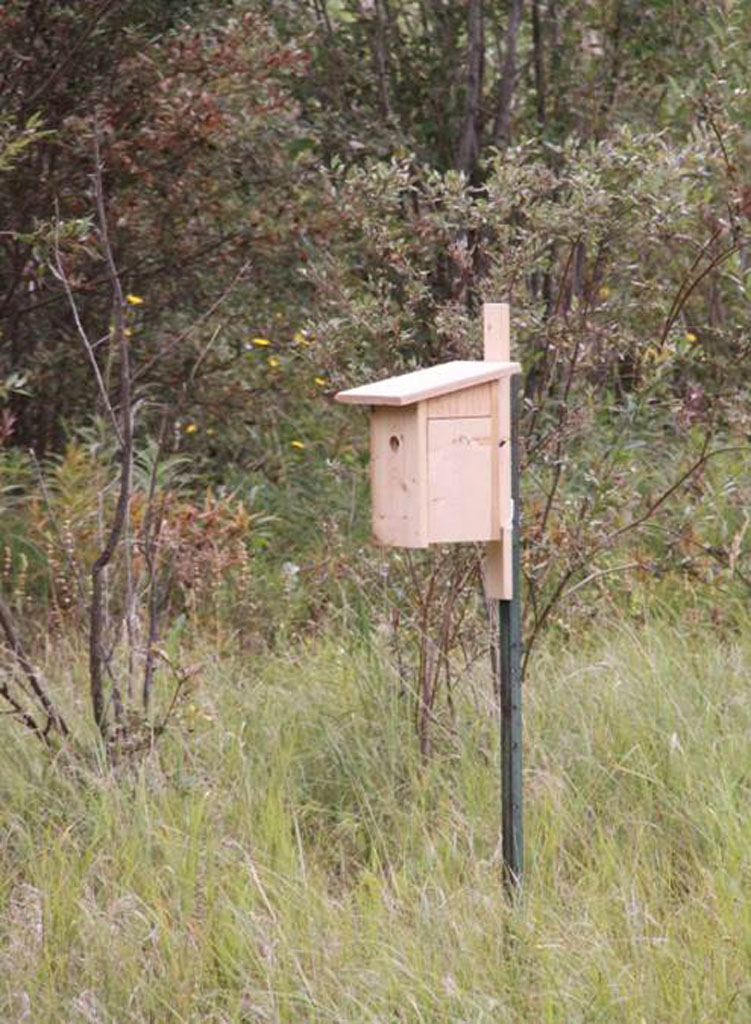Ongoing Project
Tree Swallow Nestbox Monitoring
Tree Swallow Monitoring
Since the late 1990’s, several research studies have been completed on tree swallows using nest boxes in the Fort McMurray region to understand if these birds are experiencing elevated stress due to oilsands development. Founding members of the WBWRI began monitoring the tree swallows in 2011, continuing the research begun by others. Currently, the tree swallow boxes are being monitored for productivity.
"Banding tree swallow nestlings is an excellent opportunity for our volunteers to be introduced to bird banding under the guidance of our professional bird banders."
Tree swallow colonies synchronize their nesting activities and arrive in the Fort McMurray region about early to mid-May to begin building their nests. The nests are built quickly and within a few days the females will lay one egg per day, with most of the nests in our nest boxes containing between 5 and 8 eggs. After about two weeks, the nestlings will hatch. Starting in May, our volunteers monitor the timing of nestling hatching and nestling growth so we can band them at the appropriate age.
Nestling banding normally occurs between June and July. The nestlings will leave the nest and fledge when they are between 16 and 20 days old. Banding tree swallow nestlings is an excellent opportunity for our volunteers to be introduced to bird banding under the guidance of our professional bird banders.
Sometimes we can also band the adult tree swallows when they are found in the nest boxes with the nestlings. Many of our banded adults are recaptured when they return the next year to nest again.
After the tree swallows have migrated away from Fort McMurray in the fall, or prior to their return in the spring, our volunteers assist with the removal of the old nest material to minimize the transmission of parasites that can overwinter inside the nest boxes.
2024 Project Results
Nest Boxes Occupied
Nestlings Banded
Adult Females Banded
Adult Males Banded

